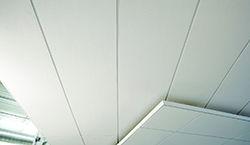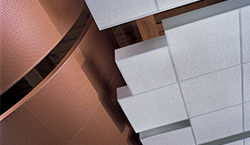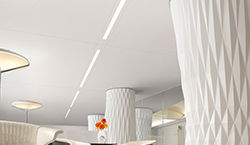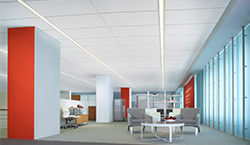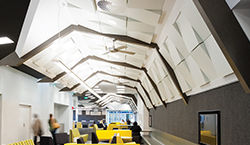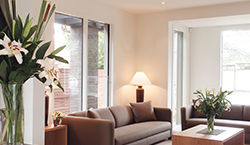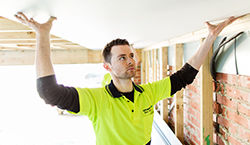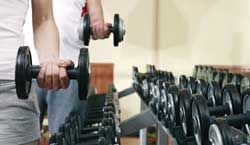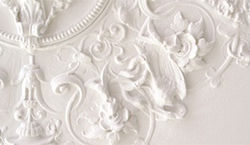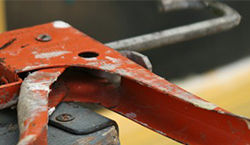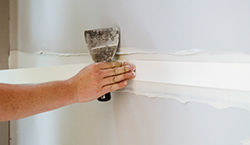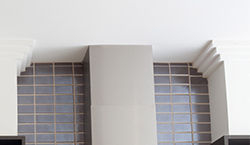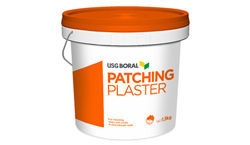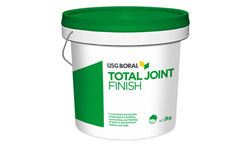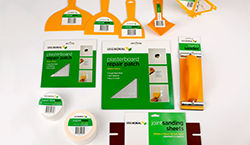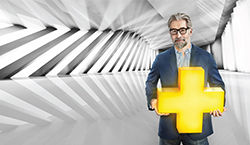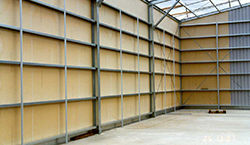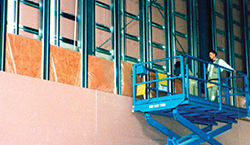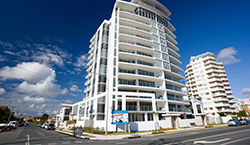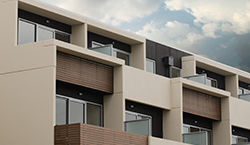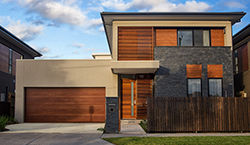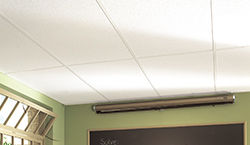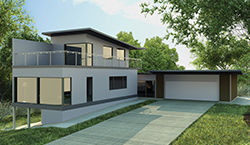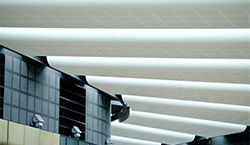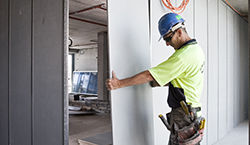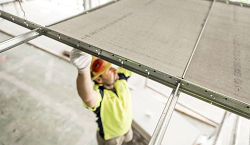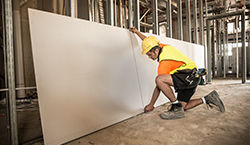-
AUSTRALIA, ENGLISH
- Contact
- Where to Buy
- Favourites
-
Looking for product documents?
Try our Document Finder
-
About Knauf
-
About Knauf
-
About Us
-
About Us
-
-
Board Of Directors
-
Board Of Directors
- Jennifer Scanlon, Chairman, USG Boral; Executive Vice President; President, International; President L&W Supply Corporation at USG
- James S. Metcalf, Chairman, President and Chief Executive Officer, USG Corporation
- Mike Kane, Chief Executive Officer and Managing Director, Boral Limited
- Al Borm, President & CEO, Boral Industries Inc
- Rosaline (Ros) Ng, Chief Financial Officer, Boral Limited
-
See All
-
-
Blog
-
Blog
- USG Boral presents ASONA at the Design Speaks Old School/New School Event
- USG Boral Partiwall® the acoustically sound and flexible partition wall system
- Architects’ perspective on USG Boral Ensemble™
- Achieving an acoustic ceiling with a monolithic look is now easy
- PERSPECTIVES: Retiring industry legend not planning to lay down his trowel
-
See All
-
- Careers
-
Contact Us
-
Contact Us
-
- Code Of Conduct
- Supplier Code of Conduct
-
-
Products
-
Products
-
Ceilings
-
Ceilings
- Acoustic Panels & Ceiling Tiles
ACOUSTIC PANELS & CEILING TILES
- Acoustic Suspension Systems
ACOUSTIC SUSPENSION SYSTEM
- Drywall Suspension Systems
DRYWALL SUSPENSION SYSTEM
- Integrated Systems
INTEGRATED SYSTEMS
- Specialty Ceilings
SPECIALTY CEILINGS
- Metal Ceilings
- Asona Acoustical Range
- ENSEMBLE™
-
-
Interior Linings
-
Interior Linings
- Standard Plasterboard
Standard Plasterboard
- SHEETROCK® Plasterboard
SHEETROCK® Plasterboard
- Technical Boards
TECHNICAL Plasterboard
- Multi-Application Boards
Multi-Application Boards
- testingMissingAltText
- testingmegamenualt2
-
-
Finishes
-
Finishes
- Jointing Compounds
Jointing Compounds
- Speciality Plasters
Specialty Plasters
- Adhesives
Adhesives
- Primers
Primers
- Sealants
Sealants
- Joint Tapes
Joint Tapes
-
-
Steel Framing
-
Steel Framing
- USG Boral Steel Stud & Track System (New Zealand)
USG Boral Steel Stud & Track System (New Zealand)
- Rondo® Metal Components
Rondo® Metal Components
-
-
Cornice
-
Cornice
- SHEETROCK® Cove
SHEETROCK® Cove
- Decorative Cornice
Decorative Cornice
-
-
Plastering DIY
-
Plastering DIY
- DIY Cornice Adhesive
DIY Cornice Adhesive
- DIY Patching Plaster
DIY Patching Plaster
- Total Joint Finish
Total Joint Finish
- Stud Adhesive
Stud Adhesive
- Tools & Accessories
Tools & Accessories
-
-
Insulation
-
Insulation
-
-
Industrial Plaster
-
Industrial Plaster
-
-
-
Solutions
-
Solutions
-
Plasterboard Systems
-
Plasterboard Systems
- Systems+
Systems+
- CinemaZone® System
CinemaZone®
- Fireclad® System
Fireclad® Fire-rated External Wall System
- Firewall® System
Firewall® System
- IntRwall® System
IntRwall® System
- Multiframe™ System
Multiframe™ System
- NeighbourZone™ System
NeighbourZone™ System
- OutRwall® System
OutRwall® System
- Partiwall® System
Partiwall® Separating Wall System
- Quiet Living™ System
Quiet Living™ System
-
-
Segment Solutions
-
Segment Solutions
- Health Care
Health Care
- Education
Education
- Bushfire Protection
Bushfire Protection
- Multi-Residential
Multi-Residential
-
-
Science
-
Science
- Acoustics
Acoustics
- Fire Performance
Fire Performance
- Seismic
Seismic
-
-
-
Inspiration
-
Inspiration
-
For Architects / Designers
-
For Architects / Designers
-
USG Boral for Architects / Designers
We believe we can change the way buildings are designed, built and occupied by delivering innovations that help you work smarter, do more and build better.
Plasterboard Installation Manual
See All
-
-
For Builders / Installers
-
For Builders / Installers
-
USG Boral for Builders / Installers
Proudly Supporting those who Build, every step of the way.
Plasterboard Installation Manual
See All
-
-
For Homeowners
-
For Homeowners
-
USG Boral for Homeowners
Our plastering products, tools & accessories are designed for the home renovator/builder making minor alterations or repairs to plasterboard walls & ceilings.
Plasterboard Installation Manual
See All
-
-
For Resellers / Distributors
-
For Resellers / Distributors
-
USG Boral for Resellers & Distributors
Our aim is to provide you solutions and make opportunities to scale your business efficiently.
Plasterboard Installation Manual
See All
-
-
-
Resources & Tools
-
Resources & Tools
- CAD Finder
- Lighting and Decoration Microsite
- Lighting & Decoration Guide
- Specialty Ceilings Design Studio
- Boral Design Lab
- Plasterboard Installation Manual
- Partiwall Estimator
-
BIMWIZARD
-
BIMWIZARD
- BIMWIZARD®
- NEW FEATURES
-
See All
-
- eSelector
-
TecASSIST
-
TecASSIST™ - USG Boral
-
-
Acoustic Ceilings e-Estimator
-
Acoustic Ceilings e-Estimator
-
-
-
What's New
-
What's New
-
News And Promotions
-
News & Promotions – USG Boral
- Holiday Trading Hours 2019/2020
- USG Boral a proud sponsor of Hoot Homes and Kylie & Jackie O’s Set You Up for Life home giveaway!
- USG Boral air-drying compounds help you avoid risk of early dry-out in hot windy dry conditions
- Labrador Trade Store Closing Down
- Competition: Your chance to win a DeWALT 5-Piece Combo Kit with WETSTOP™
-
See All
-
-
Press
-
USG Boral Press Coverage
- USG Boral Australia and New Zealand proposed to become 100% Boral-owned
- USG Boral wins Good Design Awards for design and innovation
- USG Boral advocates for healthier work sites in building and construction
- USG Boral continues to support the Royal Children's Hospital Good Friday Appeal
- BORAL AND USG BORAL SUPPORT INDIGENOUS YOUTH PROGRAM
-
See All
-
-
AUSTRALIA, ENGLISH
- Contact
- Where to Buy
- Favourites
- My Downloads
-
User Profile
User Profile
- Manage Profile
- Logout
-
Looking for product documents?
Try our Document Finder
xui3RRd85PW+7EkqtHyQYghttp://myaccount-stg.knaufapac.com -

Lighting & Decoration Guide
- Product Resources and Tools From USG Boral
- Resources
- Lighting and Decoration Guide
Lighting & Decoration Guide
Considerations on achieving an ideal Plasterboard surface finish
There is little doubt that most customers have an expectation of a perfectly flat, blemishfree plasterboard surface finish. In practice, however, such finish is impossible to achieve and all that can be realistically expected is the perception of flatness.
Experience shows that satisfaction with plasterboard surfaces improves considerably when the following requirements have been met:
- Accurate installation of wall/ceiling framing and roof trusses
- Use of ceiling battens
- Plasterboard installation to Australian Standard AS/NZS 2589:2007 'Gypsum linings
- Application and Finishing'
- Good painting practice to Australian Standard AS/NZS 2311:2009 'Guide to the Painting of Buildings'
- A planned approach to lighting design and installation.
It should be emphasized that even if plasterboard installation has been carried out strictly in accordance with AS 2589, surface finish expectations may not be met unless the other requirements listed above have also been satisfied.
A major cause of dissatisfaction with plasterboard surfaces is, in fact, unfavourable lighting from internal or external sources.

Design Influences
Building Design & External Lighting
There are many factors in modern building design that influence the overall appearance of walls and ceilings. Many of today's homes have large open living areas with unbroken ceilings across adjoining rooms and, importantly, large windows and skylights. While providing the desired modern and spacious look, these features often create lighting conditions detrimental to the appearance of wall and ceiling surfaces.
It is important that surface finish expectations are based on what can be realistically achieved given the design features of the project, particularly when some design features are likely to magnify any minor surface irregularities.
When considering the effects of building orientation and window size and positioning on appearance of wall and ceiling surfaces, one should be aware of the effects of external light at different times of the day (see demonstration above).
Glancing Light
Glancing light is the light that shines directly across the surface of a wall or ceiling. When architects, builders and home owners are considering what standard of finish is desired for plasterboard walls and ceilings, it is important to understand how the overall appearance is likely to be affected by glancing light.
Glancing light magnifies surface irregularities and can spoil the look of the highest quality surface finish.
As plasterboard linings are constructed on site using materials of two different surface textures and porosity (paper faced plasterboard and jointing compound), they cannot be expected to have a perfect, blemish-free surface. Because glancing light creates shadows from even minute undulations, it will highlight surface irregularities that would not normally be visible under a more diffuse light.
A wall or ceiling surface may be subjected to many different lighting conditions. Lighting direction and intensity changes constantly throughout the day and at night, depending on the position of windows and lighting, and the sun's reflections from adjacent buildings, water surfaces etc.
Critical instances of glancing light can occur when single unshaded light source is fixed directly to the ceiling or wall, but also in rooms with windows up to ceiling height or windows adjacent to walls (above).
A particularly severe glancing light problem occurs when a surface-mounted fluorescent batten light fitting is placed parallel with the plastering joints. Resultant high intensity white light falling at a shallow angle will magnify any surface irregularities (right).
Eliminating Glancing Light
A number of measures can be considered in order to eliminate glancing light effect on interior surfaces:
- Diffuse and soften the light entering the room through windows by using mesh curtains or other diffusers.
- Utilise a number of lower-wattage light bulbs, rather than one or two bright ones, to illuminate the room, thus reducing the shadowing effect.
- Utilise suspended or recessed ceiling lights.
- Select shades that direct light downwards or directly at the feature to be highlighted.
Incorrectly positioning a spotlight to highlight an object can also create glancing light effect emphasising surface irregularities on walls and ceilings. Feature or spot lights should light only the featured object (right).
Lighting
Lighting is one of the most important elements in building design and can add that special finishing touch. One must be aware of the effects of glancing light when considering lighting types and positioning.
Modern lighting solutions can help to balance illumination and shadow and to achieve a better outcome in a new home or commercial project.
Although the selection of light fittings is usually governed by taste and budget, it is wise to consider lighting effect on internal surfaces even before construction is commenced.
Large living areas, which are a feature of modern open plan designs, are the most severely affected by glancing light. Consideration should be given to illuminating such areas with general diffused light using downlights or spotlights, in combination with local accent lighting such as floor lamps, table lamps etc.
Cautionary Notes
Fluorescent or unshaded ceiling lights installed in kitchen areas that form part of a large open living area will, in some cases, create unfavourable effects on the other ceilings by highlighting variations in the finished surface.
In two storey dwellings, some downlights may not fit within the floor cavity. This needs to be taken into account at design stage.
Painting
Gloss/Sheen Paint Finishes
Gloss and even semi-gloss paints will accentuate surface variations regardless of the direction of lighting or the viewing angle. Flat paints, on the other hand, reflect light in a diffused form and thus mask surface variations.
As plasterboard's paper surface has a different surface texture from hand applied jointing materials, this difference in texture can be accentuated by gloss paints.
Where gloss or impervious sheen paint finishes are desirable or mandatory for functional reasons (eg in kitchens, bathrooms and commercial food preparation areas), some loss of appearance can be expected, even when the work has been carried out to the highest level of workmanship.
For the reasons outlined, a full gloss paint finish is not recommended on plasterboard walls or ceilings. Where gloss or semi-gloss paints are to be used, the highest level of plasterboard finish as stipulated by AS/NZS 2589:2007 'Gypsum linings - Application and Finishing' is recommended (Level 5 finish; see Levels of Finish).
Careful consideration must also be given to:
- The placement of windows.
- The type of lighting.
- The standard of paint finish.
- The positioning of plasterboard joints (both butt and recess).
- Building aspect – Northerly? Westerly?
Preparation
The quality of a painted finish can be improved if adequate steps have been taken in preparation of plasterboard surfaces prior to painting:
All surfaces should be clean and dust free prior to painting
Any major defects visible after the first (sealer undercoat) coat of paint should be referred to the plasterboard contractor before proceeding with the second and final coats. Minor blemishes are normally attended to by the painter.
Application (Level 4 Finish)
For the best results, Boral Plasterboard recommends roller paint application and the use of a suitable sealer undercoat over the entire plasterboard surface in order to equalise porosity and texture of the jointing material and plasterboard paper face.
Sealer undercoat should be lightly sanded before applying the second paint coat.
As spray painting does not impart a textured surface and does not equalise the porosity of what is essentially two different materials, it tends to emphasise the paper nap and accentuate joint locations.
If the spray painting method is to be used, it is recommended that all paint coats are backrolled and allowed to dry thoroughly prior to application of subsequent coats.
Backrolling must be carried out over wet paint to create a textured background for subsequent paint coats. Choice of colours is also important, as some darker colours tend to highlight surface variations. Light colours give better results, and white is recommended for the ceilings (refer to AS/NZS 2311:2009 'Guide to the Painting of Buildings').
Levels of Finish
Definition
The term 'level of finish' applies to plasterboard linings prior to decoration.
AS/NZS 2589:2007 'Gypsum linings - Application and Finishing' defines three levels of finish: Levels 3, 4 and 5. Level 4 is the default level of finish for plasterboard surfaces, unless specified otherwise.
It is essential that the level of finish is determined at the design stage since each level of finish has specific requirements for substrate tolerances and plasterboard installation, jointing and finishing. The desired level of finish may not be achieved unless all of these requirements are met through various stages of construction. For a full description of levels of finish refer AS 2589.
Level 3
This level of finish is used in areas that do not require decoration or where finish is not important (for example, above ceilings or inside service shafts and the like).
All joints and interior angles must have tape embedded in the joint compound and one separate coat of joint compound applied over all joints and fastener heads
Level 4
This is the default and generally accepted level of plasterboard finish.
All joints and interior angles must have tape embedded in the jointing compound and a minimum of two separate coats of joint compound applied over all joints, angles fastener heads and accessories.
If Level 4 surface is to be exposed to critical lighting, it should be covered with textured finishes or wall coverings. Smooth textured finishes and flat/matt or low sheen paints can be used when Level 4 finish is illuminated by non-critical lighting. Flat paints in this situation tend to conceal joints.
Weight, texture and sheen level of wall coverings/finishes should be carefully evaluated and joints should be adequately concealed if wall-covering material is lightweight, glossy or lightly patterned.
Notes:
- In critical lighting conditions, surface variations may still be apparent in a Level 4 surface finish.
- Gloss, semi-gloss or deep tone paints are not recommended for Level 4 finish, as they accentuate surface variations.
Level 5
Level 5 finish should be used where gloss or semi-gloss paints are specified or where flat or low sheen paints will be exposed to critical lighting conditions. Level 5 finish is characterized by a parity of surface texture and porosity.
All joints and interior angles must have tape embedded in the jointing compound and a minimum of two separate coats of jointing compound applied over all joints, angles, fastener heads and accessories.
The work is finished with proprietary surface preparations or skim coating to remove differential surface textures and porosity. A suitable paint or plaster material is sprayed, rolled or trowelled over the defined area. The surface texture must be random and monolithic, concealing joints and fixing points.
Notes:
- If Level 5 finish is desired for a decorated plasterboard surface, this must be specified at the design stage.
- Level 5 finish does not mean the surface is without texture variation.
- Level 5 finish is difficult to achieve and always requires the cooperation of the framer, plasterer and painter in establishing suitable work practices that deliver the agreed painted finish for the given project.
- Some minor surface variations may still be visible in Level 5 finish. However, these will be minimized.
- The surface of the defined area may require sanding to be suitable for decoration.
Most common examples of unfavourable lighting
- No curtains over windows
- Unshaded batten holder light globe
- Incorrectly positioned spotlights
- Outdoor highly reflective surfaces
- Energy saving downlights protruding from ceilings
- Ceiling fluorescent lights
- Indiscriminate use of gloss paint




